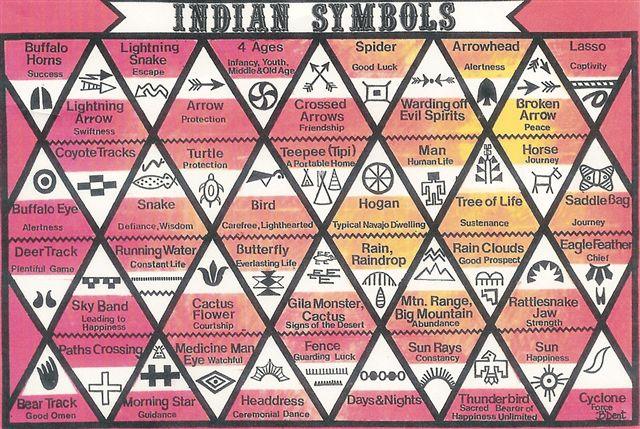Ever wondered where high street fashion designers get their inspiration for those funky aztec prints and hipster graphic t-shirt designs? Not so surprisingly, these beautiful designs are mostly metamorphoses of ancient spiritual symbols. In the art and design of the modern age, little attention is paid to the all important predecessors and inspiration for many of the designs we take as products of a graphic designer. Although these designers will have had something to do with the transformation of these images into fashionable designs and artworks, they are mere slaves to the breathtaking beauty of the original symbols.
Anglo-American artists have been adapting these designs for centuries and this post will delve into the history of some of the most used spiritual symbols in the artistic and fashion industries.
Yin and Yang
 The object of countless tacky tattoo artists and artworks such as that shown above, the Yin and Yang sign originates from the ancient Chinese philosophy that all things exist as inseparable and contradictory opposites. Each of these opposites work together and compliment each other. Each opposite also has, at it’s core, an element of the other opposite. Neither side is superior, and a balance between the two is required for them to work in complete harmony.
The object of countless tacky tattoo artists and artworks such as that shown above, the Yin and Yang sign originates from the ancient Chinese philosophy that all things exist as inseparable and contradictory opposites. Each of these opposites work together and compliment each other. Each opposite also has, at it’s core, an element of the other opposite. Neither side is superior, and a balance between the two is required for them to work in complete harmony.
These opposite poles are said to be responsible for the constant flux of the universe and of life in general and promote harmony and cooperation to achieve happiness and relative stability.
In Chinese mythology, yin and yang were born from chaos at the time of the universe’s creation and existed at the centre of the Earth in harmony. It is believed that their harmony allowed the first human (P’an Ku) to be born. As well as P’an Ku, Yin and Yang were also believed to have given birth to several of the first Chinese gods.
The use of this symbol in Anglo-American art and design has greatly concealed the incredible spiritual significance of the symbol. The general ignorance of western consumers means that little attention is paid to the amazing history of this symbol and many wear it, like ‘noughties tweens’ in Pink Floyd T-Shirts, without a clue as to what it is.
Native/Original American (Indian) Symbols
Likewise, many ‘aztec’ designs feature elements of Native/Original American (Indian) symbols. What the wearers and most consumers do not know is the specific meanings of each of these symbols, a small proportion of which are displayed in the image above. An extensive list of the meanings of these symbols can be found here. However, the extent of our ignorance as western consumers of these symbols is reductive and sad.
Dream Catchers
Finally, onto the art of dreams. Dreamcatchers are some of the most incredible, intricate and bewitching pieces of Native/Original American (Indian) spiritual art. Originally made using willow and bits and findings from everyday life, the dreamcatcher is perhaps more well known than some of the other symbols discussed here, but is still nonetheless not given the credit it deserves.
As suggested in the name ‘Dream Catcher’, these exquisite webs were made to catch the negative dreams during the night. The positive dreams would know their way through the intricate webs and so pass through and slide down the feathers to the sleeper, but the negative dreams would get caught and be destroyed by the first light of day.
However, something that is not well known about the dream catcher is the symbolism of the ‘hoop’. In Native/Original American (Indian) culture, the hoop held significant symbolic value. It symbolised strength and unity and was highly regarded by those in the Native/Original American (Indian) tribes.
Whilst many are happy to wear the symbol on their person, few truly experience the cultural significance of the dream catcher by having a physical web, and even fewer have the joy of making their own.
 So there you have it! Next time you see these symbols in the windows of countless high street stores or on the backs of festival goers everywhere, you can enlighten the world (or whoever cares to listen to you) of their true symbolic value. Consider yourself educated in the art of dreams.
So there you have it! Next time you see these symbols in the windows of countless high street stores or on the backs of festival goers everywhere, you can enlighten the world (or whoever cares to listen to you) of their true symbolic value. Consider yourself educated in the art of dreams.
Post by Daniella Bassett
For more, visit my independent blog at daniellabassett.wordpress





